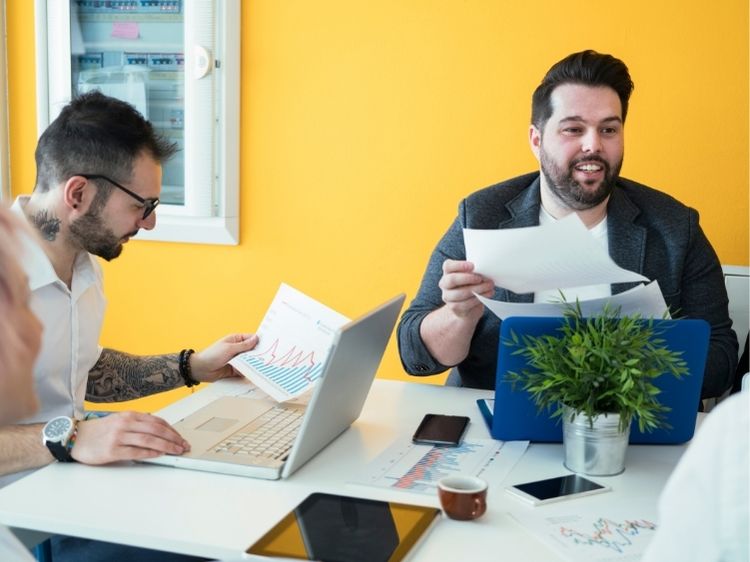Dressing the Part Without Overthinking
You’ve probably heard the term “business casual” tossed around in job descriptions, workplace dress codes, or networking events. But what does business casual actually mean? Let’s be honest—it’s one of those things everyone expects you to understand but no one explains clearly.
The good news? Business casual isn’t rocket science. It’s all about striking the perfect balance between formal and casual attire. It’s polished yet comfortable, professional without feeling stuffy. Whether you’re gearing up for your first day at a new job or prepping for a professional event, nailing business casual can help you make a great impression.
What Does Business Casual Really Mean?
“Business casual” isn’t a one-size-fits-all dress code. It varies by industry, company culture, and even geography. However, some key principles hold true across the board:
- Professionalism First: Business casual isn’t just casual clothing. You’re expected to look put-together and workplace-ready.
- Comfort Counts: Unlike full-blown formal attire, business casual gives you more leeway to dress comfortably.
- No Jeans Rule: Jeans are usually off-limits unless your workplace specifically allows them.
Let’s break it down further by gender to paint a clearer picture.
Business Casual for Men
Guys, if you’re wondering how to decode business casual, here’s a handy checklist:
Tops
- Button-Down Shirts: Stick to solid colors or subtle patterns like stripes or checks.
- Polo Shirts: A smart polo shirt can be a great alternative during warmer months.
- Sweaters: Pair a sweater with a collared shirt for a polished yet relaxed look.
Bottoms
- Chinos or Khakis: These are the cornerstone of business casual for men. Stick to neutral tones like beige, navy, or gray.
- Dress Slacks: If you’re aiming for a slightly dressier look, opt for tailored slacks.
Shoes
- Loafers
- Oxford Shoes
- Derby Shoes
Accessories
- Belts: Always match your belt with your shoes.
- Watch: A classic timepiece adds a touch of sophistication.
Business Casual for Women
Ladies, business casual gives you a lot of flexibility to express your style while maintaining a professional appearance.
Tops
- Blouses and Button-Ups: Choose breathable fabrics and muted tones. Patterns are okay, but avoid anything too bold.
- Sweaters or Cardigans: Great for layering and adding warmth in colder weather.
- Tailored Tops: A structured top instantly elevates your look.
Bottoms
- Dress Pants: A classic choice for any workplace.
- Pencil or A-Line Skirts: These are both professional and versatile.
- Ankle-Length Trousers: Modern and chic, these are perfect for business casual settings.
Shoes
- Flats: Ballet flats or loafers work well.
- Low Heels: Think block heels or kitten heels for comfort and style.
- Boots: In colder months, ankle boots are a great option.
Accessories
- Simple Jewelry: Keep it minimal with small earrings or a delicate necklace.
- Scarves: A scarf can add personality without being overpowering.
Common Business Casual Do’s and Don’ts
Do’s
- Dress Neatly: Wrinkled or frayed clothing? Big no-no!
- Choose Neutral Colors: Stick to blues, grays, blacks, and whites for versatility.
- Keep it Professional: Avoid anything overly tight, short, or revealing.
Don’ts
- Skip Athletic Wear: Leave your sneakers and hoodies at home.
- Avoid Loud Prints: Subtlety is your friend.
- Say No to Flip-Flops: Always opt for closed-toe shoes.
Why Does Business Casual Matter?
First impressions count—especially in professional settings. Wearing business casual attire shows you respect the company’s culture and value professionalism. It also boosts your confidence, making you feel ready to tackle anything the day throws at you.
Business Casual in Different Industries
The interpretation of business casual varies depending on the industry.
Corporate Offices
Expect more formal business casual—tailored pants, collared shirts, and polished shoes.
Creative Industries
Here, you can experiment with bold patterns, colors, and accessories while keeping a professional edge.
Startups and Tech Companies
These often lean towards casual, so dark jeans and stylish sneakers might be acceptable.
FAQs
What is business casual for a job interview?
Business casual for interviews typically means dress pants or a skirt paired with a button-down shirt or blouse. Avoid overly casual items like jeans or sneakers unless explicitly stated.
Are jeans ever considered business casual?
In some workplaces, yes—but they should be dark, well-fitted, and free of rips or distressing. Always check your company’s dress code first.
Can you wear sneakers with business casual?
Most of the time, sneakers aren’t appropriate. However, clean, minimalist sneakers might be acceptable in creative or tech industries.
How can I transition from business casual to formal?
Simply swap casual items for formal ones. For example, replace a polo shirt with a blazer or chinos with dress slacks.
Conclusion: Nailing Business Casual Made Easy
Now that you know what business casual means, you’re ready to dress the part confidently. Whether you’re attending an office meeting, a networking event, or simply tackling your 9-to-5, this dress code offers the perfect blend of professionalism and comfort.
Remember: when in doubt, it’s better to be slightly overdressed than too casual. After all, dressing well isn’t just about appearances—it’s about showing you’re prepared and capable.
Authoritative Links:
